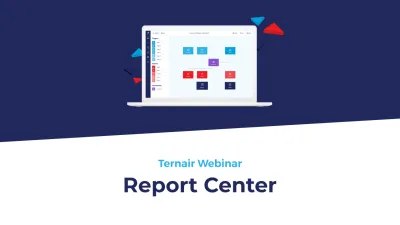Attracting new customers is a crucial part of any strategy. However, what happens to the potential customers who visit your Web site, but don't make an immediate purchase? This group of potential customers has already shown interest in your product or service, and it would be a shame to forget about them. This is where remarketing campaigns come into play. In this article, we'll dive deeper into what remarketing is, why it's essential to a successful marketing strategy, and how you can create an effective remarketing campaign using tools like Ternair.
What is a Remarketing Campaign?
Remarketing, also known as retargeting, is a strategy where you show ads to people who have visited your website or app before, but haven't taken action yet. The goal of remarketing is to remind these potential customers about your brand and encourage them to return and still make a purchase.Remarketing campaigns allow you to reach these potential customers again through different channels such as Google Ads, social media or email.Imagine someone visits your website and seems interested in a product, but leaves the website without buying anything. With remarketing, you can later re-engage this visitor with ads that specifically target the product they viewed earlier. This increases the chances that they will return to your site and eventually convert.Note: Sending commercial emails requires an opt-in. This gives a customer permission to receive emails. You can ask customers for permission when creating an account, filling out a form or making a first order.
"Remarketing can increase conversion rates's by as much as 150% by showing repeated brand messages to an already interested audience."
Why are Remarketing Campaign Important?
The value of remarketing lies in the fact that you are targeting an audience that has already shown some level of interest in your offer. Unlike cold targeting, where you are trying to attract new customers who may have never heard of your brand, with remarketing you are engaging with people who are already one step further in the buying cycle. This makes conversion much more likely.Remarketing campaigns are essential because they capitalize on the repetition of brand messages, which is proven effective in the marketing domain. Research shows that consumers often require multiple touch points before making a purchase. Remarketing ensures that your brand stays top-of-mind with your target audience and gives them that extra push to make the decision.Some benefits of remarketing campaigns include:
Increased conversion rates's:By re-engaging potential customers, you increase the likelihood that they will eventually make a purchase.
Targeted ads: You can create highly targeted ads that respond to user behavior, resulting in more relevant and attractive ads.
Cost savings: Remarketing campaigns target people who have already shown interest, which increases the likelihood of success and means you waste less money reaching a cold audience.
Strengthening Brand Awareness: Even if a user does not make an immediate purchase, remarketing helps strengthen brand awareness and build trust.
"Remarketing campaigns often have a lower CPA, on average 50% cheaper than traditional display ads, because they target a warmer audience."





